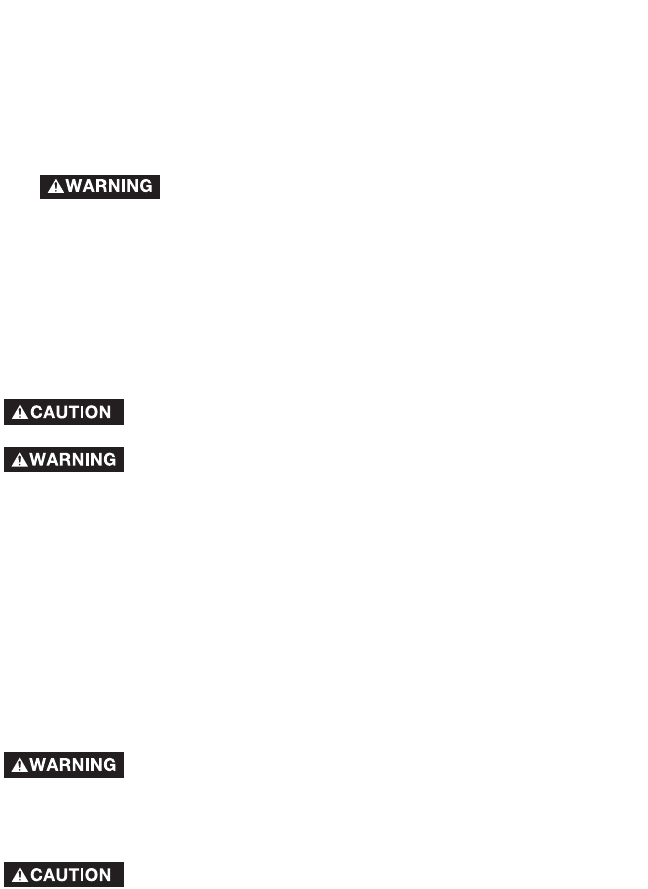
13-ENG
D26998
8. Compressed air will be available from the unit's outlet valve until it is used
up or bled off. The compressor is now ready for use.
Before each start-up
Perform the following checks before starting the air compressor.
1. Make sure nothing is blocking the belt guard, air openings, or air filter inlet.
2. Make sure the unloader valve moves freely and smoothly.
3. Check the oil level in the pump and engine, add oil if necessary.
Temperature of muffler and near by areas my exceed
150°F (65°C) avoid these areas.
4. Clean or blow off fins or any part of the air compressor that collects dust
and dirt. The air compressor will run cooler and provide longer service.
5. Open the unloader valve of the air compressor before starting the engine.
To start-up
6. Start the engine (see engine manual supplied by engine manufacturer for
correct procedure) and close unloader to allow tank pressure to pump up to
blow-off pressure.
Unit is top heavy. Make sure the compressor is stable and
will not tip before pulling the starting cord.
Too much air pressure causes a hazardous risk of burst-
ing. Closely monitor the air pressure gauge of the tank so
the maximum pressure limit is not exceeded and monitor the safety valve
to ensure excess pressure is discharged. If pressure continues to build
beyond safe limits, shut the unit down immediately and troubleshoot the
problem.
7. Check all fittings and piping for air leaks. Even minor leaks can cause the
air compressor to overwork, resulting in premature breakdown or unsatis-
factory performance.
8. Check for any unusual vibration and noise.
9. Check for oil leaks and correct any leaks found.
10. Check the pressure ratings of the air tools and accessories being used with
this air compressor before attaching, then adjust the shut-off valve for that
value.
The air compressor's outlet pressure must never exceed
the maximum pressure rating of the tool or accessory
being used. If a pressure regulator is not used, do not use accessories
rated at less than 110 psi.
11. Attach air hose and accessory. Your unit is ready for use.
Compressed air from the unit may contain water conden-
sation and oil mist. Do not spray unfiltered air at an item
that could be damaged by moisture. Some air operated tools or devices
may require filtered air. Read the instructions for the air tool or device.
Shutting Down
12. Turn off engine.
13. Close the pressure regulator.
14. Remove the air tool or accessory.
15. Open pressure regulator and allow air to slowly bleed from the tank. Close
the regulator when the tank pressure is approximately 20 PSIG.


















